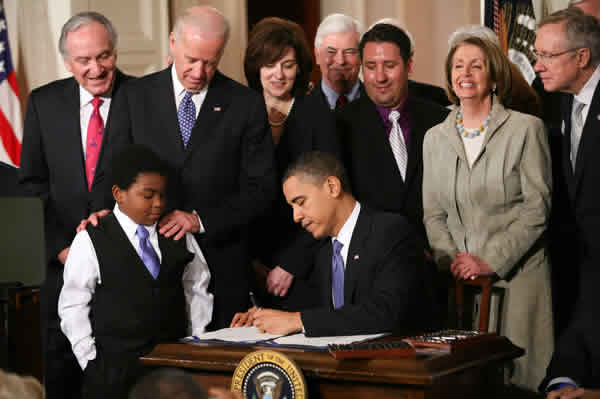Thought the “public option” was dead? Think again. Chief among the most dangerous provisions in Obamacare is the creation of government-sponsored national health plans, which are, in effect, another embodiment of the public option.
Through its multi-year implementation, the law steadily evolves into a national single-payer health care system.
Here’s the background: In 2014, the Office of Personnel Management (OPM), the small agency that runs the federal civil service, will administer at least two nationwide health plans to compete against private insurance. OPM will be responsible for negotiating the new health plans’ medical-loss ratio, profit margins, and premiums.
The OPM-sponsored plans will automatically qualify to compete against private health plans in the new state exchanges and thus will not be subject to the same qualifications and standards outlined in Obamacare for private plans in the exchanges. OPM must contract with an already existing large insurer, because such a plan must be offered in 60 percent of states in year one.
These government-sponsored plans will be the only plans that can compete nationwide under a separate set of government rules. Moreover, such plans would have a clear advantage over private plans in the exchanges. Heritage health policy expert Bob Moffit wrote nearly two years ago:
In effect, Congress is creating a special set of plans, governed by special rules, in a closed national “market.” Instead of fair competition with private health plans, Congress is sponsoring the equivalent of a national monopoly.
At a Heritage event in 2010, former OPM officials also warned against the expansion of OPM’s power and the likelihood that these government-sponsored plans would be substitutes for the public option.
Dan Blair, deputy director of OPM from 2002 to 2006, saw the program “as nothing but a placeholder for the public option, and, as time goes on, I think that we will see the program evolve more into the public health insurance option that was originally proposed.”
In addition, Don Devine, director of OPM from 1981 to 1985, warned, “This is incredible power to give somebody over the health care of the people of the United States. As Dan Blair said, this is clearly the substitute for the public option under another name.”
The uneven playing field will be coupled with projected premium increases for private plans in the individual market. If OPM can set lower premiums than private plans, consumers would be more likely to enroll in the government-sponsored OPM plans. With coverage in private insurance decreasing, OPM would gain power in the market.
Of course, the crowd-out of private insurance was exactly what Obamacare’s original public option (a government health plan) was always intended to do. Moffit explains:
Original proponents of a “robust public option…viewed it as an ideal vehicle to undercut private health plans and ensure a rapid evolution toward a single-payer system. With the creation of this “OPM alternative,” advocates of a “robust public option” have a second chance to crowd out private health insurance and secure their original policy goals.
Even Obamacare’s champions acknowledge the “public option” potential of the OPM plans. In an oddly titled blog for The Washington Post, “No, the public option is not back from the dead,” Sarah Kliff, trying to argue that the OPM plans are not actual public options, quotes an Obamacare advocate, Tim Jost, saying, “If you have a multi-state plan that offers some different benefit package, it could undercut the market.”
Kliff goes on to further undermine her own argument, saying, “The federal government will negotiate with those two insurers over how much they charge and the benefits they cover. Being a nationwide plan that has the potential to deliver a large number of members, it might get some leverage to negotiate lower prices—just like a public option would.”
Obamacare’s OPM-sponsored plans are a main ingredient in the health law’s rapidly expanding regulatory regime.
